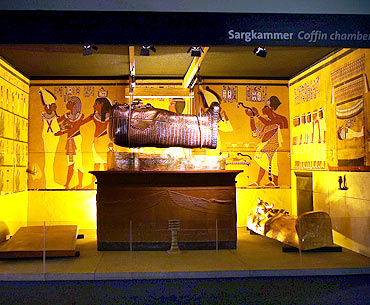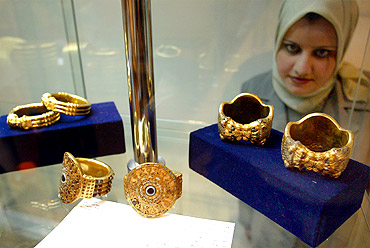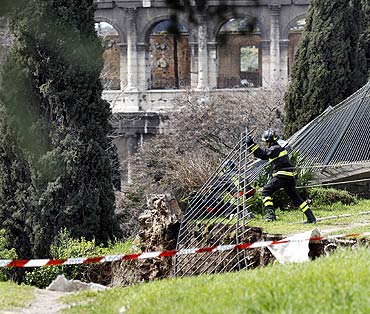 | « Back to article | Print this article |
Top 5 treasures from around the world
Ever since the vaults of the Padmanabhaswamy temple in Kerala were opened for inspection on June 27, it literally opened the floodgates for the treasure that had been lying there for centuries.
No one expected to find gold and precious gems worth Rs 90,000 crore in the secret chambers and caves inside the temple. But the value may still go up in the days to come, and we will only come to know once the complete inventory is filed in the Supreme Court next week.
The search team's finds included a four-feet-tall gold statue studded with emeralds, 15-feet-long gold necklaces and jewel-encrusted crowns.
With the discovery, the temple joined the ranks of the world's top treasure troves. Here is a list of top five treasure troves in the world.
Click NEXT to read furtherThe tomb of Tutankhamen
Contrary to popular belief, this is not the most majestic of tombs in Egypt, and also was not occupied by Egypt's powerful rulers. The tomb gained worldwide popularity ever-since it was discovered in 1922, because it was the only one found largely intact.
According to popular legend, it took nearly 10 years to empty the tomb, with archeologists recovering nearly 3,500 items. Among the items discovered were gilded statues, the Pharoh's iconic mask, and the Tutankhamen's sarcophagus, or the gold inner coffin, which weighs approximately 1.36 metric tonnes!
The Pharoh's mask can now be seen at the Egyptian Museum in Cairo.
Greatest discovery or not, the discovery made way for many a movie franchise!
Click NEXT to read furtherThe Dead Sea scrolls
The scrolls, around 900 in number, were discovered between 1947-56 in 11 caves along the northwest shore of the Dead Sea, have been called the greatest manuscript discovery of modern times. The mostly-fragmented texts are numbered according to the caves that they came out of.
They include manuscripts or fragments of every book in the Hebrew Bible except the Book of Esther, all of them formed nearly 1,000 years earlier than any previously known biblical manuscripts.
Till date, it is unclear who was responsible for the creation of the scrolls. Though some believe that they were a product of a sect of Jews living near the caves, but experts are divided.
The scrolls are on display at Jerusalem's National Museum. Though, one can easily find high-resolution copies of the scrolls on the internet.
Click NEXT to read furtherBactrian Gold, Afghanistan
The name may make you think of the title of Tintin comic book, but they are actually the name of gold artifacts, which were discovered in Afghanistan in 1978, after lying dormant for nearly 2,000 years. The treasure, acache of nearly 20,000 gold ornaments was traced to Bactria, a nomadic civilisation.
During the Afghan-Russia war, the treasure mysteriously disappeard, and was thought to be lost forever. But in 2004, the treasure was found intact, stashed three levels down in the royal-turned-presidential palace in Kabul in Agust 2003.
The treasure is now at Kabul's National Museum.
Click NEXT to read further
Nimrud Treasure, Iraq
Discovered in 1998 by archeologists in Iraq, the Nimrud tombs contained exquisitely crafted gold earrings, amulets and necklaces from the 8th and 9th centuries BC. Dazzling as the copious gold and silver jewelry in tombs may be, experts say the real treasure lies in what the tombs tell about ancient Assyria.
The treasure was stashed away shortly after Iraw invaded Kuwait, to a secret location, and was feared to be lost to the US bombing. But it was found again, in 2003.
Click NEXT to read furtherThe Domus Aurea, Rome
Literally translated from Latin, it simply means 'golden house' was built on the order of Emperor Nero, on the cinders of the fire that destroyed Rome in 64 BC. The intention was build the richest and the most beautiful residence in the world.
The site of the palace complex encompassed an area of more than 80 hectares with an artificial lake at the place where the Colosseum now stands, and a 35m high colossal statue of Nero.
It is said that after the emperor committed suicide, his successors buried it, since they were embarrassed by its grandeur. It was later rediscovered at the end of the 14th century.




